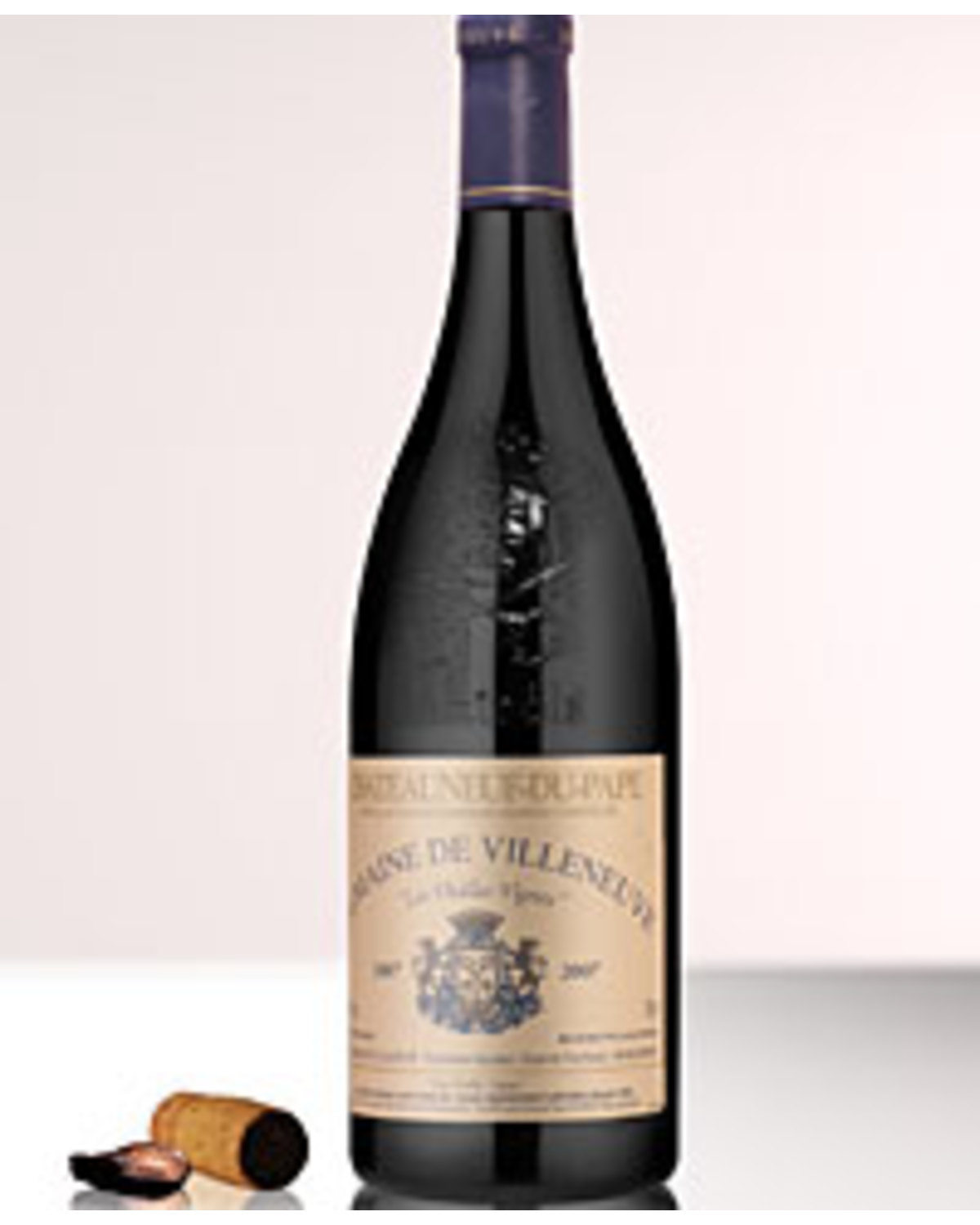
- 96
2007 Domaine de Villeneuve Les Vieilles Vignes Chateauneuf du Pape
For those new to European wines, the word 'appellation' probably represents a rather cryptic nomenclature certifying that wines have originated from their designated regions or 'terroirs'. It's also the reason why French wine labels tend to emphasise 'appellation of origin' followed by the estate owner or producer, rather than emphasising grape variety. Such labels presume that the consumer already knows what grape varieties the wine is composed of (amongst other things) by virtue of the appellation information supplied. The present day organisation of the French wine industry is founded on appellation d'origine laws conceived in the early part of twentieth century, initially as a practical response to economic depression and widespread fraud within the viticultural sector. They assured consumers that wines actually came from the places defined on their labels, so protecting the integrity and quality of French wine in general, and ultimately improving sales. Later decrees were even more prescriptive, dictating winemaking standards and obliging wine makers to plant the 'correct' grape varieties and to cap cropping levels (a significant determinant of wine quality). The system remains controversial amongst winemakers and causes confusion for the average wine lover, perhaps no where more so than in the Rhone Valley. As in other French wine regions, the Rhone's Appellations d'Origine Controlees (AOCs) rely on sets of rules based around the concept of 'terroir' (the interaction of soil and climate on wine quality) as well as specific local and historic practises. Essentially, the whole system is organised as a pyramid. The further you climb towards the summit, the more restrictive the criterias for production, the more prestigious the terroir and the better the wines should be.
The 'Cotes du Rhone' AOC constitutes the base of the pyramid. The second level is the 'Cotes du Rhone Villages' AOC which follows slightly different rules. Out of ninety 'communes' allowed to produce Cotes Du Rhone Villages, eighteen of them are allowed to step up the hierarchy ladder with the mention of the village name on their labels, provided they respect the more restrictive yields as well as other analytical requirements at harvest (our last Rhone offer included wines from such villages as Cairanne, Roaix, Rasteaux and Valreas). Finally, at the top of the pyramid, we find the local appellations, for which the term 'Crus' is the norm. Here yields generaly cannot exceed 35Hls/Ha and strict conditions for cultivation apply. Chateauneuf Du Pape is one such Cru, forming the apex of the Southern Rhone's appellation pyramid. The extraordinary and long standing reputation of its wines is such that in the 14th century, the Papacy in Avignon favoured the village as their summer residence, expanding the vineyards to suitable surrounding areas. As a reminder of this region's Papal history, each bottle of Chateauneuf bears the coat-of-arms of the city of Avignon, with its two crossed keys, those of Saint Peter, the frst Pope. Seven Popes later, the rigor established in those times has survived the centuries. In fact, Chateauneuf became the working model for France's earliest appellation laws. Under the rules, 13 different varieties are permitted, though Grenache, Mourvedre, Syrah and Cinsault dominate. Counoise, Clairette and Bourboulenc play second fiddle. Hand harvests are compulsory. Not surprisingly the wines have developed a high demand world-wide and typically command prices well above AU$70. In the best years, such as 2007, they display a youthful vibrancy and a richness that has lured Australian winemakers into 'GSM' blends, while their amazing cellaring potential can reward one of the rarest scents in the world of wine - truffles.
Tasting Note:
Deep dark crimson red mauve colour with deep crimson mauve hue. Perfumed aromas of black cherries, plum and violets followed by some spice, incense and earthy end notes. The palate displays excellent richness and weight with flavours of ripe black cherry, dark plum and blackberry followed by a spicy back palate with some meaty characters and blackpepper also emerging. Excellent depth and length with very fine grained perfectly balanced tannin structure. Long aftertaste of spice, black cherry, dark plum, dried meat and blackpepper.
Cellar 5-6 years (2015-2016)
Alc 15.0%
Other Reviews…
This estate did not offer their 2008 for tasting, but they have hit the bull’s eye with their brilliant 2007 Chateauneuf du Pape. Aged 80% in tank and 20% in old barrels, this blend of 70% Grenache, 16% Mourvedre, and the rest Syrah, Cinsault, and the white grape Clairette is made from vines that average 65 years of age (some are over 100 years).
This dense ruby/purple-hued offering smells like the essence of raspberry jam intermixed with boysenberries and blueberries. Exceptionally pure, with a layered mouthfeel and sweet tannin, this is undeniably the finest wine made by Proprietor Stanislas Wallut since he purchased Domaine de Villeneuve in 1992. The great oenologist Philippe Cambie consults at this biodynamically farmed property (over 75% of Cambie’s Chateauneuf du Pape clients are biodynamically farmed vineyards – an impressive statistic). This 2007, which was bottled unfiltered, should drink beautifully for 15-20 years. It is undeniably a big-time sleeper of the vintage.
94 points
Robert Parker – The Wine Advocate
to most of Australia
